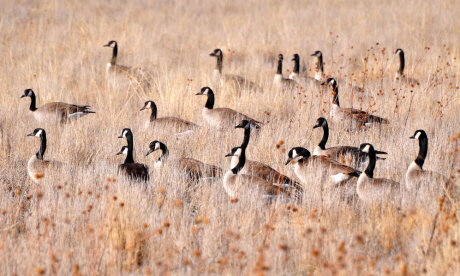
Blame climate change. Blame tourism. But now the wildlife are taking holidays of their own, says Mark Carwardine
"You should have been here in October,” the man on the Flight Deck told me. It was mid-January and he was fiddling with his camera and a lens so long and powerful that I’m surprised he ever had to leave home.
“In October,” he continued in his mission to depress me, “there were tens of thousands of snow geese and 10,000 sandhill cranes here. It was a real spectacle.”
That’s exactly what I’d flown to Albuquerque, in New Mexico, and then driven all the way to Bosque del Apache National Wildlife Refuge, to see – a real spectacle. I’d wanted to visit this renowned wildlife haven, just south of Socorro on the northern edge of the Chihuahuan Desert, for as long as I could remember. I’d seen so many photographs of the place over the years that I could close my eyes and imagine that classic scene – a trillion geese and cranes standing in an extraordinary mist that turns red just before the sun peeps over the distant mountains.
I’d headed straight for the Flight Deck – a famous wooden observation platform built on stilts over the main lake, where photographers and birdwatchers gather every winter morning before dawn. They wait together in muffled silence for ‘lift-off’, when unimaginable numbers of snow geese take to the air en masse in front of the rising sun. A friend once enthused that the sound of their wingbeats alone was worth the trip. (He said the roar of the birds taking flight was almost deafening – like a goal-scoring cheer at a football match.)
But my first impression wasn’t quite as good as I’d been anticipating for all those years. There was a grand total of one snow goose, hiding under a bush and looking decidedly ill.
A handful of sandhill cranes did their best, albeit unsuccessfully, to fill the void on the lake. And there was no red mist. To add insult to injury, it was -15ºC and, thanks to United Airlines, I’d been separated from my luggage.
I was wearing the clothes I’d flown in and was very, very cold – too cold to care.
I was forced to retreat to the relative warmth of the hire car and passed the first few days happily driving around Bosque’s 24km loop road, photographing a wealth of wildlife from mallards to coyotes. By the end of the week I’d been reunited with my luggage, I was wearing warm clothes and was venturing outside once again. Snow goose and sandhill crane numbers were slowly building up – I imagine the week after my visit would have been a good one – but I never did experience the great spectacle I’d travelled so far to see.
There is one consolation. I’m writing a book called You Should Have Been Here Last Week! about all the spectacular wildlife I’ve almost, but not quite, seen over the years. And Bosque will provide another chapter. Not that I need more examples.
I can’t even count the number of times I’ve arrived at top wildlife sites around the world, each renowned for one particular species at a specific time of year, only to be faced with days or even weeks of disappointment.
I know there are never any guarantees in wildlife watching. The challenge in observing – and especially photographing – wildlife is all part of the fun.
But what’s significant is that I seem to be experiencing that heart-sinking feeling more these days than ever before.
I blame global warming – wildlife seasons around the world are less predictable than they once were. And we’ll all be hearing those dreaded words more and more often: “I don’t know where they’ve all gone – you should have been here last week/last month/last year when there were hundreds/thousands/tens of thousands of them all around the hide/platform/camp/lodge/boat.”